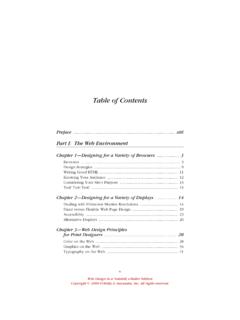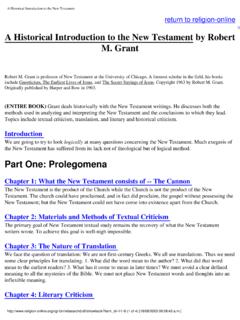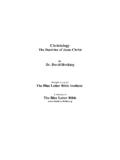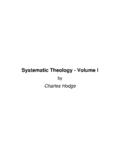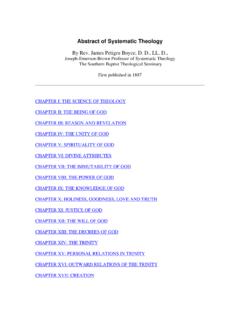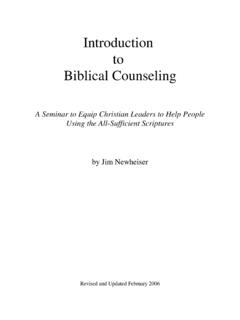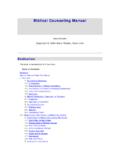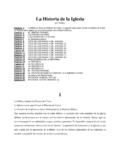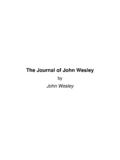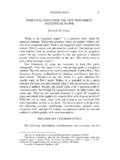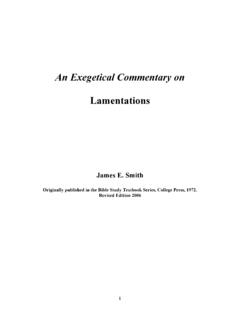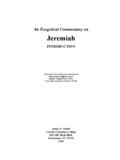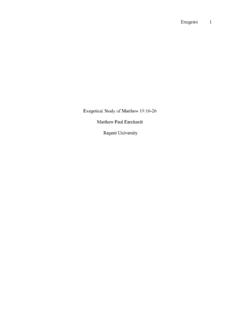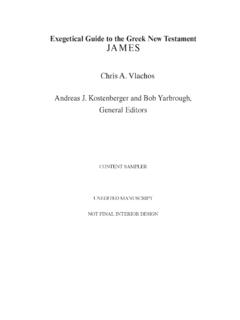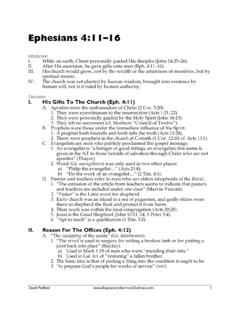Transcription of Exegetical Fallacies - The NTSLibrary
1 Exegetical Fallacies Common Mistakes Every Student of the Bible Must Avoid William D. Barrick Professor of Old Testament, The Master s Seminary Introduction Over twenty years ago, D. A. Carson published his superb volume entitled Exegetical Fallacies (Baker, 1984). In it he covers the areas of word-study Fallacies , grammatical Fallacies , logical Fallacies , and presuppositional and historical Fallacies . Personally, I think it should be required reading for every seminary student without exception. Since Carson did such a wonderful job of covering the issues, what areas should I cover in this seminar?
2 Repetition is instructive, but it can also be boring, unless there are some new twists to the presentation. Therefore, it is my aim to focus on the subtitle for this session: Common Mistakes Every Student of the Bible Must Avoid. Forty-two years of preaching, thirty-eight years of teaching, and over twenty years of Bible translation ministries provide an abundance of personal examples. Lest this session become a litany of mea culpas, however, I will not reveal how many of the following mistakes have been my own at one time or another.
3 The Evidential Fallacy In the evidential system of American and British jurisprudence the concept of prima facie (literally, at first view ) evidence is very important. Prima facie evidence is evidence that is sufficient to raise a presumption of fact or to establish the fact in question, unless evidence of equal veracity is presented in rebuttal. Included in this evidential system is the presumption of innocence until proven guilty and that witnesses must present facts, not opinions. In the area of biblical studies this evidential methodology stands in opposition to the hermeneutics of doubt (or, the Troelschian principle of skeptical criticism).
4 1 As Robert Dick Wilson observed, our text of the Old Testament is presumptively correct, .. its meaning is on the whole clear and trustworthy. 2 Whether we are discussing the Old Testament s historical narratives or the Gospel narratives, evangelicals should approach the biblical text with a presumption of factuality. One of the greatest Fallacies students of Scripture can commit is to fail to adequately recognize the prima facie nature of biblical evidence. It is fallacious to condition acceptance of the biblical text upon corroboration by external evidence.
5 When the student comes upon interpretive problems in the biblical text, he must allow the text to speak and must accept the testimony of the text with a presumption of accuracy. Therefore, reading about the Chaldeans in Genesis 11:28-31, for example, should not cause us to doubt the veracity of the text because the extrabiblical Assyrian records do not mention Chaldeans until the 9th century The Assyrian evidence is not contemporary with Moses (the author of Genesis 11) nor with Babel (the historical setting of Genesis 11).
6 Acceptance of the Assyrian evidence over the biblical evidence denigrates the biblical record and treats it with skepticism rather than as prima facie evidence. As Kenneth Kitchen points out, inconsistency dominates the appeal to Assyrian historical texts, since 1 See V. Philips Long, Historiography of the Old Testament, in The Face of Old Testament Studies: A Survey of Contemporary Approaches, ed. by David W. Baker and Bill T. Arnold (Grand Rapids, MI: Baker Books, 1999), 154, 169.
7 2 Robert Dick Wilson, A Scientific Investigation of the Old Testament, rev. by Edward J. Young (Chicago: Moody Press, 1959), 9. Exegetical Fallacies Barrick Shepherd s Conference 2006 2the Egyptian pharaohs of the period from the patriarchs to Moses also do not appear anywhere in the Assyrian In other words, we err when we automatically assume that every major interpretive problem is due to an inaccuracy within the text itself. As we deal with problems in the biblical text, we must assume that it is accurate until proven otherwise by equally accurate, equally authentic, and equally ancient evidence.
8 For example, when we read in the superscription to Psalm 60 that Joab slew 12,000 Edomites, we ought to accept that as prima facie evidence. Of equal standing are the records in 2 Samuel 8:13 and 1 Chronicles 18:12. The former reveals that David slew 18,000 Arameans; the latter declares that Abishai slew 18,000 Edomites. Are these three contradictory accounts, or three complementary accounts? Perhaps the differences in the individuals involved reflect the chain of command. David, as king, was commander-in-chief. Joab, being next in command as the chief of the armies, was the field commander and Abishai, a subordinate officer to Joab, was over one contingent of the field army participating in this particular action.
9 Variation in the numbers of enemy casualties might reflect different methods of calculating the casualties at separate levels of the chain of command or different times for certain counts prior to a settled statistic. Possibly, the different casualty counts indicate different engagements within the greater battle or even a series of battles. As for the difference between Edom and Aram, we should keep in mind that both Edomites and Arameans participated in the campaign against David s forces (see 2 Sam 8:5; cp. 1 Kgs 11:17 [the Aramean Hadad with Edomites]).
10 The target area was Edom, but Arameans were present and had also created a diversion in Aramea (Syria) where David had gone to quell the uprising. Another example from the OT might help illustrate the difference between what current archaeologists and historians are saying about the text as compared to a proper understanding of the text itself. Consider the exodus from Egypt. Grant Osborne mentions the lack of primary physical evidence for the He then observes that there is a fair amount of secondary evidence for such a migration and sufficient data to accept the historicity of the events.
